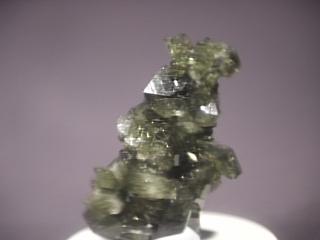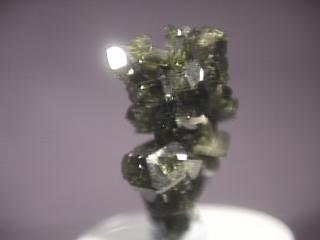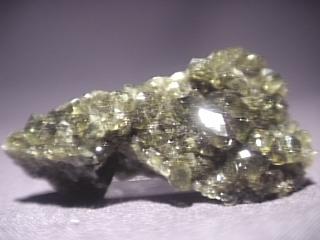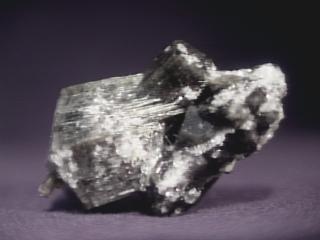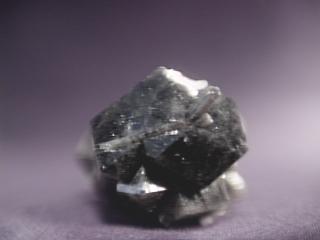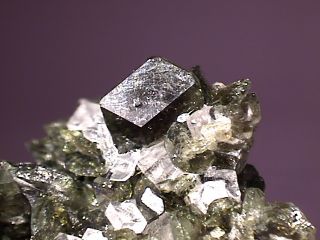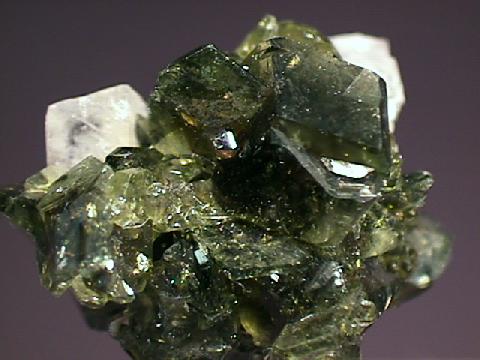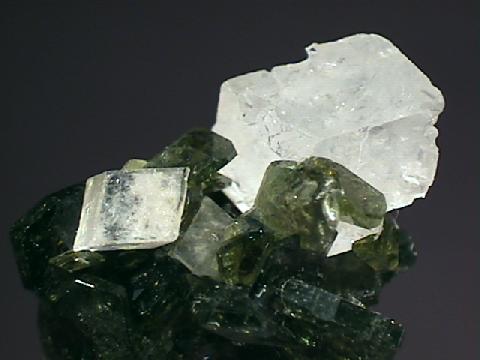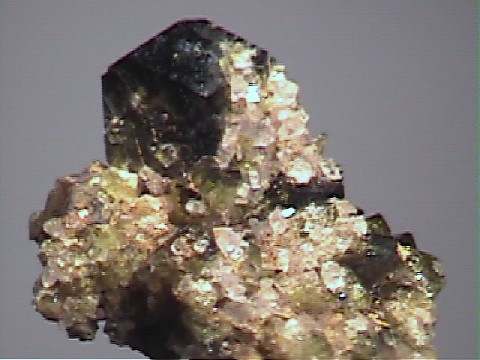 THE
MINERAL UVITE (A Tourmaline)
THE
MINERAL UVITE (A Tourmaline)
- Chemistry: Ca(Mg, Fe)3Al5MgSi6O18(BO3)3(OH)3, Calcium Iron Magnesium Aluminum Boro-silicate Hydroxide.
- Class: Silicates
- Subclass: Cyclosilicates
- Group: Tourmalines
- Uses: Only as mineral collection specimens
Specimens
Uvite was considered to be a very rare member of the Tourmaline
Group, but it is now becoming widely available on the mineral markets.
Other more common and more well-known tourmalines are schorl
(black, opaque and iron rich) and elbaite
(various colors, transparent to translucent, used as a gemstone and lithium
rich). less common tourmalines are dravite,
Uvite is the magnesium/iron-rich member of the group and has one notable exception to the typical tourmaline generalized formula. The usual 6 aluminums are reduced to 5, with a magnesium inserted into one of the aluminums' positions. Despite having so many coloring ions like iron and magnesium, some specimens of uvite can be colorless. The typical specimens of uvite on the mineral markets tend to be an interesting dark green to almost black in color. Other properties of uvite seem to fall in the norm for a tourmaline, except uvite tends to form stubby crystals rather than the long prismatic crystals of its close cousins. These crystals, though, are well formed and show all the interesting features that make tourmaline crystals so much fun to collect.
Uvite is a noted skarn mineral. The skarn is a term for a rock that is the product of a chemically unusual magma body that has intruded into and recrystallized a "dirty" limestone. The "dirty" limestone is not composed of just calcite, CaCO3, like "clean" limestone but is mixed with silicates and/or phosphates, etc. This mixing of the hot, chemically unusual liquids and volatiles of the magma with the different minerals of the "dirty" limestones produces some interesting and rare minerals after all the recrystallizing is done.
PHYSICAL CHARACTERISTICS:
- Color is green, colorless, white, light brown or black.
- Luster is vitreous.
- Transparency: Crystals are transparent to translucent, some dark black specimens can look opaque.
- Crystal System is Trigonal; 3 m
- Crystal Habit is typically three sided stubby almost tabular crystals. The terminations can be either a simple to complex trigonal pyramid or a flat basal face. The prism faces are striated lengthwise. In cross section, all tourmalines will appear predominantly triangular in shape with some crystals showing a hexagon. Doubly terminated crystals are hemimorphic, meaning that the two ends of the crystal are not exactly alike.
- Hardness is 7.5
- Specific Gravity is 3.0+ (average)
- Cleavage is absent although there is basal parting.
- Fracture is uneven to conchoidal.
- Streak is white.
- Other Characteristics: Strongly pleochroic and piezoelectric.
- Associated Minerals include apatite, sphene, zircon and quartz.
- Notable Occurrences is Sri Lanka; Pierrepont, New York, USA and in other Skarn localities.
- Best Field Indicators are crystal habit, triangular cross-section, locality, environment, color and hardness.

